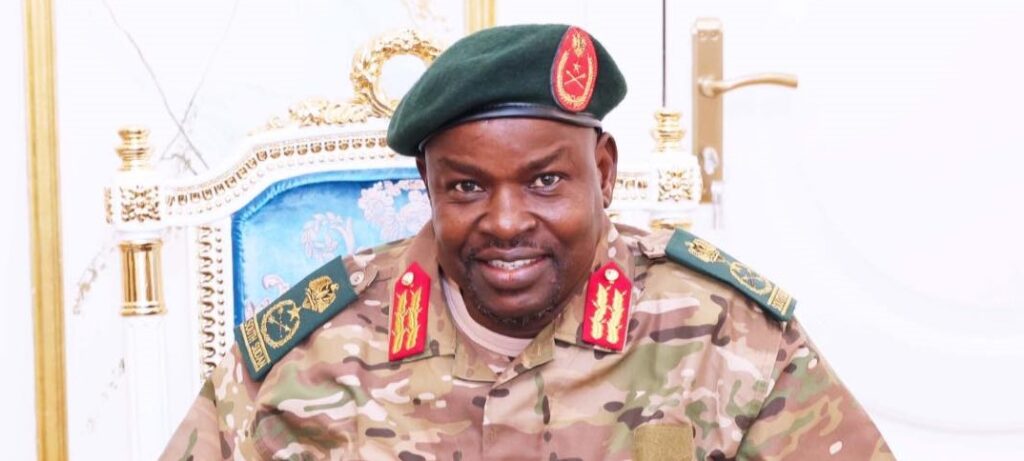Harvard Law professor placed on leave after firing pellet gun near Boston area synagogue
By Ariel Zilber
Published Oct. 4, 2025, 8:55 p.m. ET
A visiting professor at Harvard Law School has been placed on administrative leave after allegedly firing a pellet rifle outside a Brookline synagogue on the eve of Yom Kippur.
Carlos Portugal Gouvea, 43, was arrested Wednesday night after police said he fired two shots near Temple Beth Zion on Beacon Street in what he later claimed was “hunting rats,” Brookline.News reported.
Investigators do not believe that Gouvea was targeting the synagogue, but he was charged in Brookline District Court with illegally discharging a pellet gun, disorderly conduct, disturbing the peace and malicious damage of personal property, according to court records.

Carlos Portugal Gouvea, 43, a visiting professor at Harvard Law School, has been placed on administrative leave.harvard.edu
Harvard Law School spokesperson Jeff Neal told The Post that Gouvea “has been placed on administrative leave as the school seeks to learn more about this matter.”
The Harvard Crimson first reported his suspension.
The school has not announced any further disciplinary action. The Post has sought comment from Harvard Law School, Temple Beth Zion and Gouvea.
Police said the incident triggered a large response involving more than a dozen officers as congregants gathered for services marking the start of the holiest day on the Jewish calendar.
Two private security guards working at the synagogue reportedly confronted him after hearing “two loud shots” and spotting him holding a pellet rifle.
When the guards approached, Gouvea allegedly set down the gun before a “brief physical struggle” broke out as they tried to detain him, the outlet reported, citing a police account.
Police said Gouvea then ran into his nearby residence before emerging moments later, where he was handcuffed and arrested. Officers later discovered a shattered car window and a pellet lodged inside the vehicle, according to the police report cited by Brookline.News.
Gouvea was arraigned Thursday and pleaded not guilty to all charges, the court docket shows. He was released on personal recognizance and is due back in court in early November.

The school has not announced any further disciplinary action against Gouvea.VW Pics/Universal Images Group v
Neither Gouvea nor an attorney listed in court records responded to requests for comment from The Crimson or Brookline.News.
Police said there was no indication the synagogue itself was targeted.
Gouvea, a Harvard Law School alumnus, earned his doctorate from the university in 2008. He also serves as an associate professor at the University of São Paulo Law School and heads a Brazilian think tank focused on social and environmental justice. Brookline police did not immediately respond to a request for additional details about the incident.
Gouvea is scheduled to appear again in Brookline District Court in November.
The reported incident occurred at a sensitive time for the Jewish community, which is marking the high holy days.

Gouvea was arrested Wednesday night after police said he fired two shots with a pellet gun near Temple Beth Zion on Beacon Street.Facebook/Brookline MA Police Department
Earlier this week, two men were killed and three others were seriously injured after a man drove into pedestrians near a synagogue and began stabbing victims before being shot dead by police in the British town of Manchester.
Six people have been arrested on suspicion of terror offenses as investigators probe the assault, during which the attacker allegedly wore a fake explosives belt.
Authorities believe one victim, Adrian Daulby, was accidentally killed by police gunfire as congregants barricaded the synagogue entrance to stop the attacker.
Harvard has been at the center of a nationwide debate over whether colleges and universities have failed to adequately counter antisemitism on campuses.
The Trump administration, which has accused the school of failing to protect Jewish and Israeli students from harassment, has also threatened to withdraw billions in federal funding unless major reforms were enacted.
Harvard has filed a lawsuit challenging the legality of the government’s actions, arguing that funding freezes are punitive and politically motivated, even as both sides near a possible settlement.
EM On the 49th Parallel
Thé Mulindwas Communication Group
"With Yoweri Museveni, Ssabassajja and Dr. Kiiza Besigye, Uganda is in anarchy"
Kuungana Mulindwa Mawasiliano Kikundi
"Pamoja na Yoweri Museveni, Ssabassajja na Dk. Kiiza Besigye, Uganda ni katika machafuko















